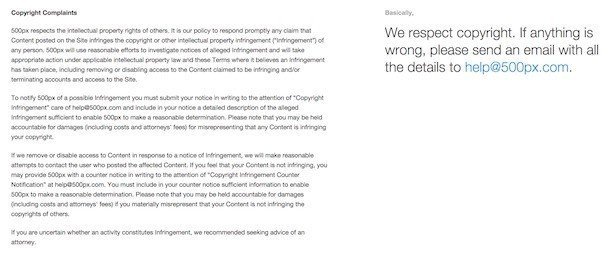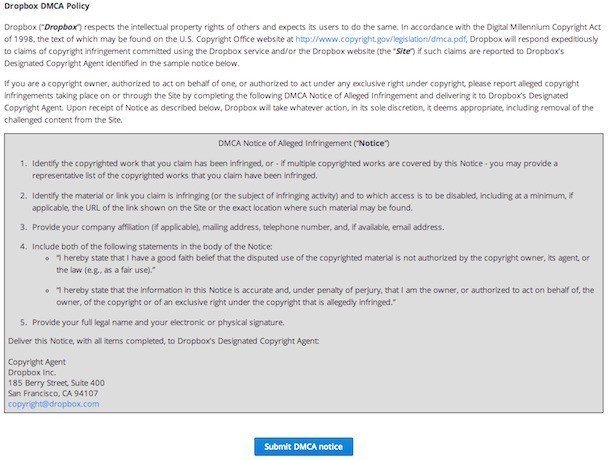DMCA
DMCA stands for Digital Millennium Copyright Act. This U.S.-based copyright law was passed in 1998 and implements two different World Intellectual Property Organization (WIPO) treaties. These treaties are the WIPO Copyright Treaty and the WIPO Performances and Phonograms Treaty.
The DMCA is made up of five separate titles that work to protect copyrights.
We'll show you when the DMCA applies to your business and what you need to do to comply with its requirements.
DMCA Clauses and Notices
A DMCA clause in a Terms and Conditions agreement informs copyright authors that you (your company) will respond to takedown notices and remove any infringing content if that content is copyright infringement) - the agreement that users should agree to when they register an account with you - specify and inform users that any content they post, create or make available through your website must be their own, i.e. they must own the rights to that content.
Usually this kind of section in most Terms and Conditions agreements is added at the Content clause, but you may also find a separate DMCA Notice clause in the agreement.
500px informs account owners in their Terms of Service page that users must own the rights to the content they post on 500px:
You are the owner of all rights, including all copyrights in and to all Content you submit to the site:
To meet the requests of potential authors who found infringed content on 500px without their authorization, the Terms of Service agreement of 500px includes a Copyright Complaints clause:

A separate page for DMCA and Copyright is better if your entire website and/or mobile app is heavily reliant on user-generated content, e.g. such as YouTube, Vimeo or 500px.
YouTube has this kind of page, named Copyright:
![]()
Clicking on the "Copyright" page from YouTube leads you to a special designed page that deals with copyrighted works available through YouTube:

Submitting a "DMCA Notice" to YouTube is done through a web form:
If you believe your copyright-protected work was posted on YouTube without authorization, you may submit a copyright infringement notification. These requests should only be submitted by the copyright owner or an agent authorized to act on the owner's behalf.
The fastest and easiest way to notify YouTube of alleged copyright infringement is via our webform:
If you choose to request removal of content by submitting an infringement notification, please remember that you are initiating a legal process.
Do not make false claims. Misuse of this process may result in the suspension of your account or other legal consequences.
If you are a company and own exclusive rights to a large amount of content that requires regular online rights administration, you may want to apply for access to YouTube’s Content ID system or to our Content Verification Program.
We will also accept free-form copyright infringement notifications submitted by email, fax and mail.
Dropbox places a "Copyright" clause in their Terms of Service page that's used to inform authors that Dropbox will respond to notices of alleged copyright infringement. It then redirects authors to the Dropbox's DMCA Policy page:

DMCA Counter-Notices
After a DMCA notice is filed, and if the content in question gets removed, the individual who posted the information has the opportunity to have the content reposted again and the claim of infringement removed.
This is an important right, as otherwise copyright owners could far overstep their legal rights at the expense of the right to share content.
You should include a clause and instructions that let users know how they can file a DMCA counter-notice if they believe their material has been removed by misidentification or mistake.
To summarize, you should include a DMCA clause in your Terms and Conditions agreement to let users know that you honor the DMCA.
Let users know how they can submit a takedown notice. Include clear instructions or a webform.
Also let users know how they can dispute any takedowns via a counter-notice. Again, include clear instructions or a webform for submitting counter-notices.
If you have a webform or extensively detailed information, you can create a simple, short clause in your Terms and Conditions agreement and provide a link to the separate form or page within the clause. This will keep your Terms and Conditions looking neat and easy to read.